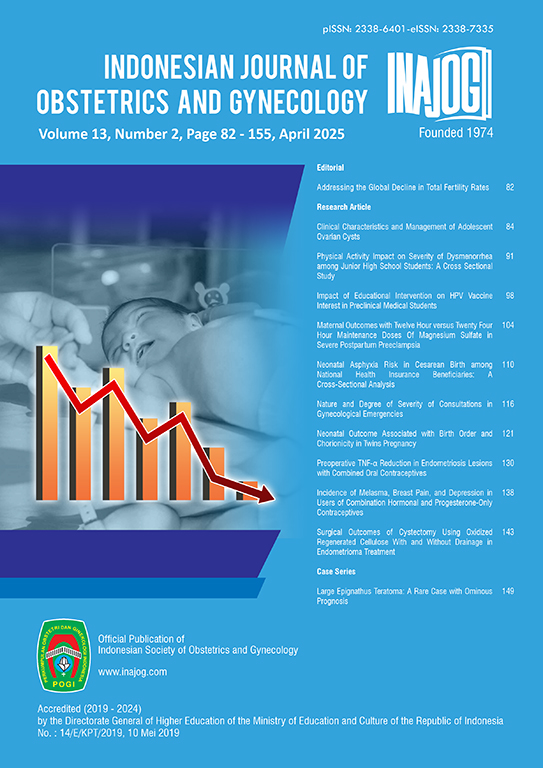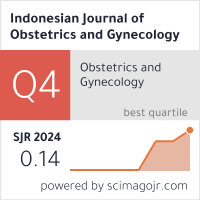Association Between High-risk HPV Infection and Cervical Precancerous Lesions
Abstract
Abstract
Introduction: More than 70% of cervical cancer cases are associated with high-risk HPV infections, especially those of type 16/18. Persistent high-risk HPV infection can cause cervical lesions and develop into cancer; therefore, early detection of HPV infection is important. Screening using HPV DNA tests, either as a single test or combined with a cervical cytological test, is recommended. This study aimed to determine the association between high-risk HPV infection and the development of cervical precancerous lesions.
Methods: This cross-sectional study was conducted on 104 patients at RSUPN Dr. Cipto Mangunkusumo in 2020-2022 using secondary data from HPV DNA test results with the DiagCor GenoFlow Human Papilloma Virus Array Test and cervical cytology results from liquid-based cytology. The data were presented in tables and analyzed using SPSS version 26.
Results: The prevalence of high-risk HPV infection was 30.8%, with the most common genotypes being HPV 18 & 52 (15.6%), HPV 51 (12.5%), and HPV 58 (9.4%). Cytological results from the high-risk HPV types showed that 16 out of 32 (50%) were abnormal. High-risk HPV caused 11 (78.6%) low-grade squamous intraepithelial lesions and 5 (83.3%) high-grade squamous intraepithelial lesions. It is known by the statistical analysis test that there was a significant relationship between high-risk HPV infection and cervical precancerous lesions (p=0.000).
Conclusion: A significant association was observed between the occurrence of high-risk HPV infection and the development of cervical precancerous lesions. Appropriate management and supervision can be carried out in accordance with risk stratification based on screening results.
Keywords: cervical precancerous lesions, high-risk HPV infection, screening
Downloads
Copyright (c) 2025 Indonesian Journal of Obstetrics and Gynecology

This work is licensed under a Creative Commons Attribution-NonCommercial-ShareAlike 4.0 International License.













